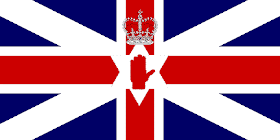Here is a post of three new coat of arms designs. These are a new design for the Prince of Wales, a national coat of arms for France and a design for the Lifeboat Institution.
Prince of Wales
I noticed that HRH The Prince Charles, Prince of Wales has quite a few titles as the heir apparent and therefore various coats of arms and badges in his various roles see:
Coat of arms of (left) Duchy of Cornwall, (Centre) Duke of Rothesay, (Right) Prince of Wales and (Below) Badge of the Prince of Wales:
As can be seen from the Prince of Wales coat of arms it has quite a few symbols including the Cornwall arms, welsh dragon, Royal arms of Wales and even the heraldic badge. So my idea was in a similar way why not combine all the different coats of arms into one that could be used anywhere and everywhere? The Result:
Like the Prince of Wales coat of arms it features a shield imposed upon the Royal Arms of the United Kingdom, however this is quartered with the historic arms of the Principality of Wales in the 1st and 4th quarter. The Duke of Rothesay arms in the 2nd and the Duchy of Cornwall arms in the 3rd. there is no crown of the heir apparent topping the shield as it is on top of the helmet already and I think the Prince of Wales coat of arms is a little overkill on crowns with the crown appearing on it five times, compared to only twice on my design. There is no label as I don't think this is needed as the arms are already distinguished from the coat of arms of the monarch. The feathers of the badge have become the crest (which is actually what they were historically). The Dragon has replaced the unicorn for two reasons first and foremost dragoons are cool and secondly its a historic symbol of wales and as Prince of Wales is the heir apparent's primary title in all parts of the UK (even Scotland), this is one of the rare heraldic occasions where Wales (dragon) trumps Scotland (unicorn). You could just drop the Royal Arms of the UK altogether and just use the Welsh, Rothesay and Cornish arms but I think as he is first inline for the throne he should keep them.

France
I was surprised when I found out that the French Republic has no official coat of arms or heraldic emblem! Although there are a few unofficial ones:
Left is the symbol above the entrance to the Senate, centre is sometimes used on an unofficial basis, and right appears of the French passport and is used by diplomatic buildings like embassies, none of them have official status however. indeed the last true coat of arms of France were used by Napoleon III! I thought this needed rectifying and came up with this:

The emblem that appears on the passport and building is the centrepiece of the arms. The boarder features 27 Fluer de lys representing all the regions of France. The colours reflect the flag. The supporters are two cockerels the national animal of France. The one on the right bears an interpretation of the Oriflamme the emblem of the Carolingian Empire (800–888AD) and is the earliest known flag of France. While the one on the left carries le Tricolour the modern flag of modern France. The cap on top of the helm most commonly known as the liberty cap has its origins in the French Revolution and is a symbol of the republic. The motto which is currently used by the French state also has its origins in the revolution.
RNLI
If any organisation deserves a coat of arms it is the Royal National Lifeboat Institution (RNLI), which an organisation who operates 24/7 365 days a year search & rescue boats and beach lifeguards all over the British Isles, and despite the term 'royal' receives no government aid or funding but is completely financed by public donations! In 2012 RNLI lifeboats were called out 8,321 times rescuing an average of 22 people a day often in extreme and dangerous circumstances. The emblem of the RNLI is their house flag which is well known around the British Iles and is in the logo:

It is also the justifiable centrepiece of my coat of arms design:

The crest features a naval crown with a Severn Class seagoing lifeboat on a rough sea. The supporters are seahorses. From what I am aware the RNLI has no official motto, although the family motto of its founder "With courage, nothing is impossible." and "Let not the deep swallow me up" as well as "Always Ready" and "Never turn Back" are all unofficially associated with lifeboat crews and memorials. Personally I thought "Always Ready" and "Never turn Back" were the most inspiring and so I used the motto.





































